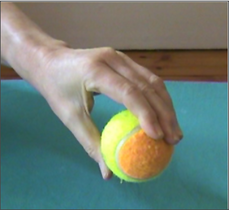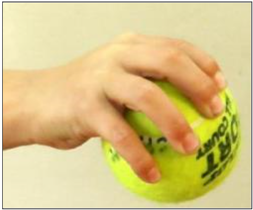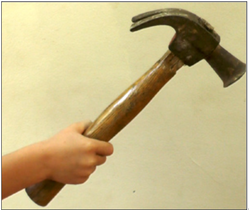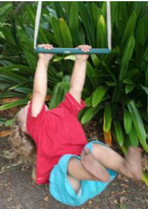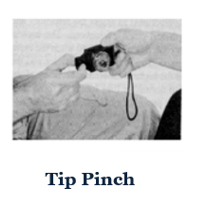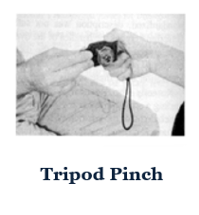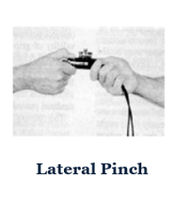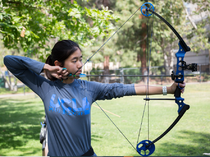Sporting Hand and Wrist - Why Power and Pinch Grips Matter
Types of Grip[edit | edit source]
The hand-wrist represents the most sophisticated tool in the human being. Hand function and strength are important elements in day to day life and participation in sports [1].
1-Power Grip: closing a hand with the thumb in opposition to all other fingers together generates a power grip[2].
A-Lumbrical grip
B-Spherical grip
C-Hammer grip
D-Hook grip
| Lumbrical grip | Spherical grip | Hammer grip | Hook grip |
|---|
2-Pinch grip: generated by pressing the thumb pulp against the pulp of the index, middle, ring, and little fingers’ distal phalanges[1].
A-Tip Pinch: index pressing against the thumb
B-Tripod Pinch: adding the middle finger
C-Lateral Pinch, also known as key pinch: achieved by pressing the thumb pulp against the lateral aspect of the proximal interphalangeal joint of the index finger. In this grip, the thumb is going into adduction and flexion[2]
| Tip Pinch | Tripod Pinch | Lateral Pinch |
|---|
Grip in Sports[edit | edit source]
Different sports require different grips, often differs between hands. If you are involved in sports rehabilitation, understanding the type of grip and involvement of the thumb is important to measure the strength and address any related injuries.
Here are some examples of different grips used in various sports:
Bow and arrow: the lead hand holding the bow and keeping it stable will use a power grip. Whereas the backhand, pulling the string, also in power grip but the thumb is less involved going into more adduction.
